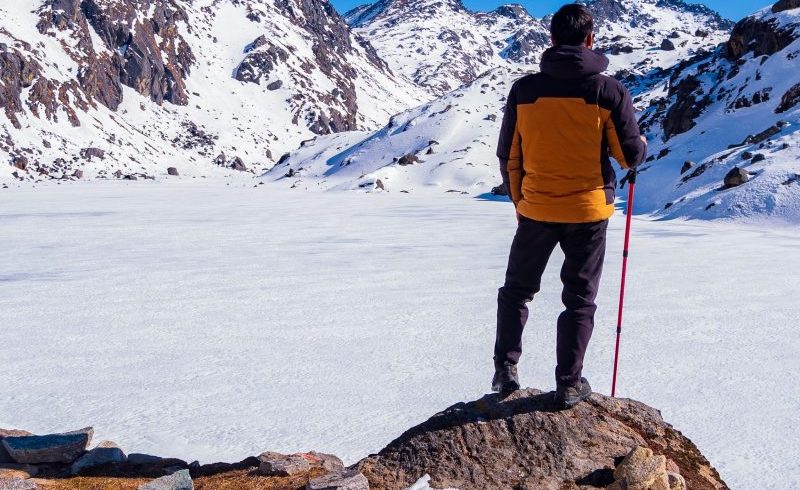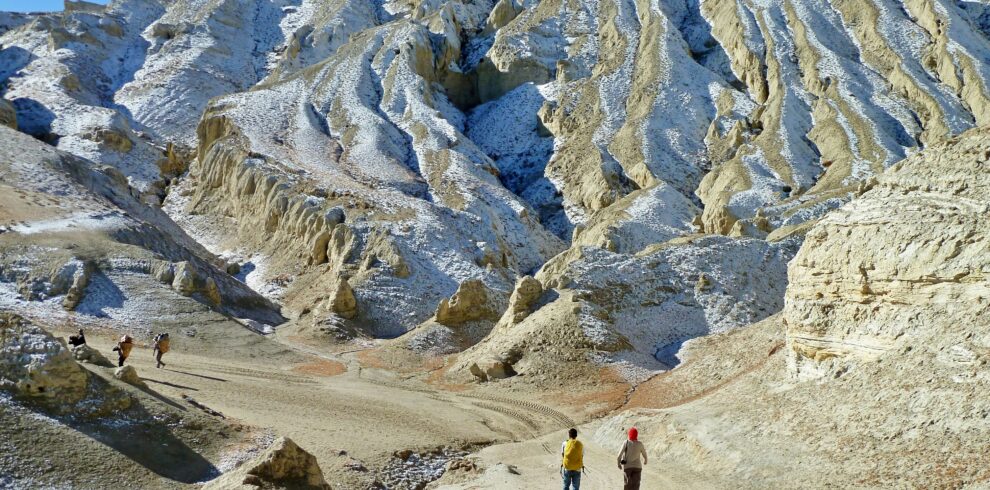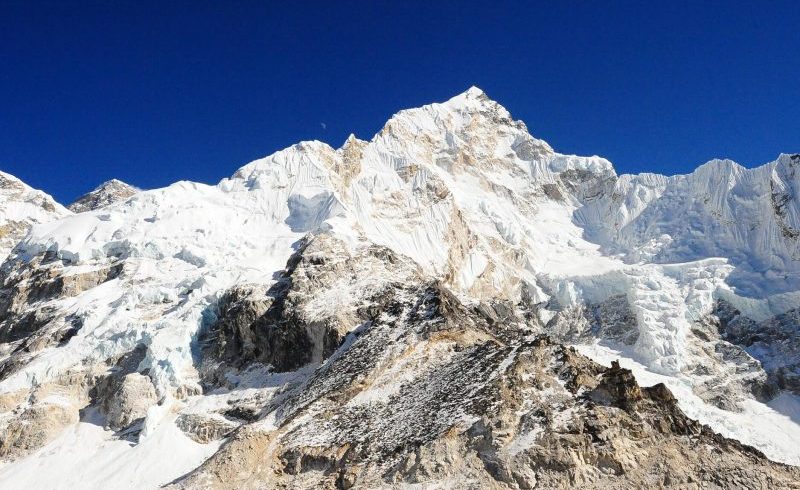Langtang Valley Trek: Experience an unforgettable adventure in the stunning Langtang region with Female Guide Holiday Pvt Ltd. This meticulously crafted 10-day Langtang Trek offers a remarkable blend of natural beauty, cultural immersion, and exhilarating trekking experiences.
Starting from the vibrant town of Kathmandu, you will journey through lush valleys, picturesque landscapes, and charming traditional Tamang villages. As you trek deeper into Langtang National Park, be prepared to be captivated by diverse flora and fauna, including rare wildlife species unique to this Himalayan paradise.
The highlight of your trek will be reaching Kyanjin Gompa, a serene monastery set against the backdrop of soaring peaks, including the majestic Langtang Lirung. Here, you’ll have the chance to explore local culture, savor authentic Tamang cuisine, and take in breathtaking views that will leave you in awe.
With our expert female guides leading the way, you can rest assured of a safe and enriching trekking experience. They possess extensive knowledge of the trails and are deeply committed to promoting sustainable tourism while supporting local communities.
Join Female Guide Holiday Pvt Ltd for Langtang Trek and immerse yourself in the rich cultural heritage and natural wonders of the Himalayas. Whether you’re an experienced trekker or a first-time adventurer, this trek promises to be a journey of a lifetime. Book your trek today and discover why Langtang is one of Nepal’s most captivating trekking destinations!
Highlights
- Climb to Kyanjin Ri (4,700m) for panoramic vistas of Dorje Lakpa, Langtang, Langtang Lirung, and Ganesh Himal.
- Explore the Sherpa settlement of Langtang Village and engage with the local culture.
- Sample the renowned yak cheese in Kyanjin Gompa, a local delicacy.
- Discover the unique traditions and vibrant culture of the Tamang people along the trail.
- Trek through beautiful forests filled with rhododendron, pine, bamboo, and juniper trees.
- Enjoy the tranquil sounds of flowing mountain streams and stunning rock cliffs.
- Spot diverse wildlife, including the Himali black bear, red panda, and langur, in their natural habitat.
Best Time for Trekking in Langtang
The best time for trekking in the Langtang region is during the spring (March to May) and autumn (September to November) seasons.
Spring (March to May): This is one of the most popular times to trek in Langtang, as the weather is mild and the rhododendron forests burst into vibrant bloom, creating a stunning landscape. Temperatures are comfortable, making it ideal for exploration and photography.
Autumn (September to November): Another excellent time for trekking, autumn offers clear skies and stable weather conditions. The temperatures are cooler, and the stunning views of the mountains are often at their best, making it perfect for avid trekkers.
Both seasons provide excellent visibility and enjoyable trekking conditions, ensuring an unforgettable experience in the breathtaking Langtang region. Whether you’re a seasoned trekker or a first-timer, choosing to trek during these times will enhance your adventure with spectacular scenery and pleasant weather. Plan your Langtang Trek with Female Guide Holiday Pvt Ltd for an incredible journey!
Difficulties of the Langtang Trek
While the Langtang Trek offers stunning scenery and rich cultural experiences, it also presents certain challenges that trekkers should be aware of:
Altitude Gain: The trek reaches elevations of up to 4,700m (Kyanjin Ri), which can lead to altitude sickness if not properly acclimatized. It’s important to ascend gradually and stay hydrated.
Variable Weather Conditions: Weather in the Himalayas can be unpredictable, with sudden changes in temperature and conditions. Trekkers should be prepared for rain, snow, or harsh winds.
Steep Terrain: The trails can be steep and rugged, requiring good physical fitness and stamina. Some sections may be challenging for beginners or those unaccustomed to long hikes.
Remote Location: The Langtang region is relatively remote, with limited access to medical facilities and rescue services. Trekkers should be self-sufficient and carry a basic first aid kit.
Cultural Sensitivity: Understanding and respecting local customs and traditions is crucial. Being mindful of cultural practices can enhance the trekking experience.
Limited Facilities: While teahouses are available along the route, accommodations can be basic, and services may be limited, especially during the peak trekking seasons.
Physical Demands: Daily trekking hours can range from 5 to 8 hours, requiring physical endurance and mental resilience. Proper training and preparation are essential for a successful trek.
Why Choose the Langtang Trek
The Langtang Trek is a unique adventure that offers an array of breathtaking experiences. Here are some compelling reasons to explore this incredible region:
Stunning Mountain Views: Climb to Kyanjin Ri (4,700m) for panoramic views of majestic peaks, including Dorje Lakpa (6,990m), Langtang (7,227m), Langtang Lirung (7,200m), and Ganesh Himal. The vistas are truly awe-inspiring.
Cultural Exploration: Visit the Sherpa settlement of Langtang Village and immerse yourself in the rich culture and traditions of the local communities. Experience the warmth and hospitality of the people who call this beautiful area home.
Delicious Local Cuisine: Don’t miss the chance to taste the renowned yak cheese in Kyanjin Gompa. This local delicacy is a must-try for food enthusiasts.
Unique Tamang Culture: Discover the unique lifestyle and traditions of the Tamang people, known for their vibrant culture and rich history.
Natural Beauty: Traverse through lush forests of rhododendron, pine, bamboo, and juniper trees. The diverse flora and medicinal herbs add to the trek’s enchanting experience.
Serene Mountain Streams: Enjoy the soothing sounds of mountain streams and the dramatic cliffs that create a magical atmosphere for nature lovers.
Rare Wildlife: The Langtang region is home to various rare wildlife, including the Himali black bear, red panda, and langur. Keep your eyes peeled for these incredible creatures as you trek.
Weather Conditions in Langtang
The weather in the Langtang region varies significantly throughout the year, influenced by its high altitude and mountainous terrain. During the spring months (March to May), temperatures are generally mild, ranging from 10°C to 20°C during the day. It makes an ideal time for trekking as the rhododendron forests bloom beautifully. In contrast, autumn (September to November) features cooler temperatures, with daytime highs around 15°C to 18°C and chilly nights, especially at higher altitudes. Both seasons offer clear skies and stable weather, enhancing visibility of the stunning mountain landscapes. However, trekkers should be prepared for sudden weather changes, including rain or snowfall, particularly during the monsoon months (June to August) when heavy rainfall can lead to landslides and muddy trails. Winter (December to February) brings cold temperatures, often dropping below freezing at night, making trekking more challenging but offering a serene, snow-covered landscape for the adventurous. Being aware of these weather conditions is essential for planning a successful trek in the Langtang region.
Passport and Visa Requirements for Trekking in Langtang
To embark on your trekking adventure in the Langtang region, having a valid passport and a tourist visa for Nepal is essential. Most travelers have the option to obtain a visa on arrival at Tribhuvan International Airport in Kathmandu, which simplifies the process significantly. The visa application is straightforward, allowing for a hassle-free entry into the country.
Visa Fees:
- 15 Days: $30
- 30 Days: $50
- 90 Days: $125
These fees apply to single-entry visas and can be paid in cash, either in U.S. dollars or equivalent in Nepali Rupees. It’s advisable to keep some passport-sized photos handy, as they are typically required for the visa application process.
TIMS and Permits for Langtang Trek
When trekking in the Langtang region, securing the appropriate permits is crucial for a smooth and legal adventure. Two key permits you will need are the Trekkers’ Information Management System (TIMS) card and the Langtang National Park Permit.
1. Trekkers’ Information Management System (TIMS) Card:
The TIMS card is mandatory for all trekkers in Nepal. It helps the authorities monitor trekkers for safety and rescue purposes. You can obtain a TIMS card through trekking agencies like Female Guide Holiday Pvt Ltd or directly from the Nepal Tourism Board offices in Kathmandu and Pokhara. The fees for the TIMS card are approximately $10 for individual trekkers and $6 per person for group trekkers.
2. Langtang National Park Permit:
This permit is required to enter Langtang National Park, ensuring the conservation of this beautiful area. The permit can also be arranged through trekking agencies or obtained at the park entrance. As of now, the fee for the Langtang National Park Permit is around $30 per person.
Meals
During the Langtang trek, you’ll experience a delightful variety of meals that reflect the rich culinary heritage of Nepal. Traditional Nepali dishes, such as dal bhat (lentil soup with rice) and momo (dumplings), are staples on the trail, providing hearty nourishment for trekkers. Many tea houses along the route offer a range of options, from vegetable curry to pasta and even pizza, catering to diverse palates. Breakfast often includes warm porridge or pancakes, ensuring you start your day with energy. Don’t miss the chance to savor local ingredients like fresh greens and potatoes, which are sourced from nearby villages. With stunning mountain views accompanying your meals, dining during the Langtang trek is not just about sustenance but also about immersing yourself in the vibrant culture and breathtaking landscapes of the region.
Accommodation
Accommodation during the Langtang trek offers a unique blend of comfort and cultural immersion, making it an integral part of the trekking experience. Along the trail, trekkers will find a variety of options, primarily in the form of tea houses and lodges that provide cozy rooms and essential amenities. These family-run establishments offer a welcoming atmosphere and often serve delicious home-cooked meals, allowing guests to enjoy authentic Nepali hospitality. Many tea houses come equipped with basic facilities, including hot showers and Wi-Fi, while some provide stunning views of the surrounding mountains. As you trek through picturesque villages like Langtang and Kyanjin Gompa, you’ll have the opportunity to connect with local culture and traditions, all while enjoying comfortable accommodations that help you recharge for the adventures ahead. Whether you’re a solo traveler or part of a group, the diverse lodging options along the Langtang trek cater to various budgets and preferences, ensuring a memorable journey through this breathtaking region.
Drinking Water
Staying hydrated is crucial during the Langtang trek, and there are several options for obtaining drinking water along the route. Most tea houses provide boiled or filtered water for trekkers, ensuring you have safe drinking options. It’s advisable to carry a reusable water bottle and consider using purification tablets or a portable water filter to treat water from streams and natural sources. In higher altitudes, purchasing bottled water is also an option, though it’s less environmentally friendly. To minimize plastic waste, opt for refilling your bottle at tea houses that offer water purification services. Remember to hydrate regularly, especially during long trekking days, to keep your energy levels up and enjoy the stunning landscapes of the Langtang region.
Physical fitness and Requirement
Physical fitness is essential for a successful Langtang trek, as the journey involves varying terrain, steep ascents, and high altitudes. Trekkers should ideally have a moderate level of fitness, which can be developed through regular cardiovascular exercises like hiking, jogging, or cycling. Strength training, particularly for the legs and core, can enhance stability and endurance on the trail.
Before embarking on the trek, it’s advisable to engage in a training regimen for several weeks, focusing on stamina and flexibility. Activities such as hill walking, stair climbing, and long walks will help prepare your body for the physical demands of the trek. Additionally, acclimatization is crucial; ensure you take the time to adjust to the altitude to minimize the risk of altitude sickness.
Proper gear, including sturdy hiking boots, moisture-wicking clothing, and a good backpack, also plays a vital role in your overall comfort and performance. By preparing physically and ensuring you have the right equipment, you can fully enjoy the breathtaking beauty and cultural richness of the Langtang region.
Langtang Trek Route
The Langtang Trek begins with a scenic journey from Kathmandu to Syabrubesi, which typically takes around 8-9 hours by bus or jeep. The route includes winding, gravel roads, and you can choose between traveling via Tokha or Galchhi. Once you arrive in Syabrubesi, the trek officially starts as you set off toward Lama Hotel.
As you hike, you’ll be surrounded by stunning landscapes, including lush forests, alpine pastures, and meadows. Continuing on, you’ll make your way to Kyanjin Gompa, passing through Mundu and the breathtaking Langtang Valley. Many trekkers opt to spend an extra day at Kyanjin Gompa to explore Kyanjin Ri, renowned for its spectacular 360-degree views of the Langtang range. After taking in the incredible sights, you’ll retrace your steps back to Syabrubesi and then enjoy a return drive to Kathmandu, completing this unforgettable adventure.
Travel Insurance
For your safety and peace of mind during the Langtang trek, we strongly recommend obtaining travel insurance from a reputable comprehensive insurance company that specifically includes coverage for emergency evacuation. This insurance should cover medical expenses related to trekking, as well as any potential evacuation costs, particularly in remote areas where access to medical facilities may be limited. It’s essential to ensure that the policy provides adequate coverage for high-altitude trekking activities and addresses any pre-existing conditions if applicable. By securing this insurance, you can embark on your adventure with confidence, knowing that you are protected in case of unforeseen circumstances.
Passport and Visa for Nepal
Before embarking on your Langtang trek, ensure that your passport is valid for at least six months beyond your planned departure date from Nepal. All foreign travelers require a visa to enter Nepal, which can be obtained upon arrival at Tribhuvan International Airport in Kathmandu or in advance from a Nepali embassy or consulate.
Visa Fees:
- 30-Day Tourist Visa: USD 50
- 60-Day Tourist Visa: USD 125
- 90-Day Tourist Visa: USD 200
These visas can be paid for in cash (USD preferred) upon arrival. It’s advisable to bring passport-sized photographs for the visa application process. Make sure to check the latest visa regulations and fees, as they can change. Having the correct visa will ensure a smooth start to your trekking adventure in the beautiful Langtang region.
Add-Ons
Private Jeep Option: While our standard package includes bus transportation from Kathmandu to Syabrubesi, you might prefer a more comfortable and personalized journey. We can arrange a private jeep for an additional cost of USD 160(rate subject to change) one way. This option ensures a more spacious and convenient travel experience, allowing you to relax and enjoy the beautiful scenery along the way.
Helicopter Flight from Kathmandu to Syabrubesi: For those looking to skip the road travel altogether, a helicopter flight is available. This option allows you to soar directly from Kathmandu to Syabrubesi, offering breathtaking aerial views of the landscape. The cost for this one-way trip is USD 1,950 per helicopter(Rate subject to change), making it a premium choice for a swift and scenic transfer.
Packing List for Langtang Trek
Trekking Gear
- Trekking boots (waterproof and well-broken-in)
- Hiking socks (wool or synthetic, multiple pairs)
- Trekking poles (optional but helpful for steep sections)
- Gaiters (for muddy or snowy conditions)
Clothing
- Base layers (moisture-wicking long-sleeve shirts and thermal tops)
- Insulating layer (fleece jacket or down sweater)
- Trekking pants (quick-dry, lightweight)
- Shorts (for warmer days)
- Waterproof and windproof jacket
- Warm hat (for cold evenings)
- Sun hat (for daytime protection)
- Gloves or mittens (preferably waterproof)
- Buff or neck gaiter
- Underwear (quick-dry)
Sleeping Gear
- Sleeping bag (rated for at least -10°C/14°F)
- Sleeping bag liner (optional for extra warmth)
Personal Items
- Daypack (for daily essentials)
- Hydration system (water bottles or bladder)
- Water purification tablets or a portable filter
- Personal first-aid kit
- Sunscreen (high SPF)
- Lip balm (with SPF)
- Insect repellent
- Toiletries (toothbrush, toothpaste, biodegradable soap, etc.)
- Quick-dry towel
Electronics
- Camera (for capturing the stunning scenery)
- Phone (with power bank)
- Headlamp or flashlight (with extra batteries)
- Adapters (if needed)
Miscellaneous
- Snacks (energy bars, nuts, dried fruits)
- Map and compass (or GPS device)
- Multi-tool or knife
- Trash bags (to pack out your waste)
- Notebook and pen (optional for journaling)
Optional Items
- Travel insurance details
- Emergency contact numbers
- Small games or cards (for downtime
Important Note
At Female Guide Holiday, your safety is our top priority. We are committed to providing a secure and enjoyable trekking experience in the Langtang region. Our experienced guides are well-trained in first aid and emergency procedures, ensuring you receive the best care if needed. We conduct thorough pre-trek briefings to prepare you for the journey ahead, including guidance on acclimatization, health tips, and safety protocols. We also recommend obtaining comprehensive travel insurance that includes emergency evacuation coverage to enhance your protection during the trek. Rest assured, we are dedicated to ensuring that your adventure is not only memorable but also safe. Your well-being is our responsibility, and we are here to support you every step of the way.




